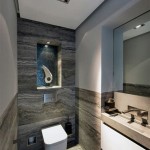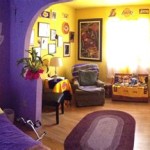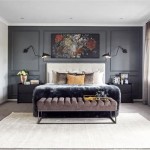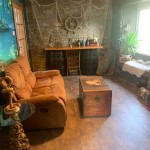How to Decorate a Sloped Ceiling Bedroom
Decorating a bedroom with a sloped ceiling presents unique challenges. The angles and reduced headroom can make a room feel cramped and awkward if not approached thoughtfully. However, with strategic planning and creative execution, a sloped ceiling bedroom can transform into a cozy and stylish retreat. This article will explore several key considerations and practical strategies for maximizing space and enhancing the aesthetic appeal of such rooms.
Understanding the Space and Optimizing Layout
The first step in decorating a sloped ceiling bedroom is a thorough assessment of the existing space. This involves measuring the dimensions of the room, noting the angle and height of the slope, and identifying any architectural features such as dormer windows or alcoves. These features can be incorporated into the design to create unique focal points and maximize usable space.
Consider the placement of furniture carefully. Larger pieces, such as beds and dressers, are generally best positioned against the tallest walls to avoid obstructing walkways and maximizing headroom. Avoid placing tall furniture, such as wardrobes or bookshelves, under the lowest parts of the slope, as this can emphasize the restricted space and create a feeling of claustrophobia. Instead, opt for lower-profile furniture that fits comfortably under the slope.
Strategic use of space is also important. Consider utilizing the area under the slope for storage. Built-in shelves or drawers can be custom-designed to fit the contours of the room, providing ample storage space without sacrificing valuable floor area. Alternatively, freestanding storage units with angled tops can be used to maximize vertical space while accommodating the slope.
Think creatively about the function of different areas within the room. If the slope is particularly low on one side, that area might be best suited for a reading nook or a low seating area. By assigning specific functions to different areas, one can optimize the use of the available space and create a more comfortable and functional bedroom.
Natural light plays a crucial role in the overall feeling of the room. Maximize the amount of natural light by keeping windows clear and unobstructed. If the room lacks sufficient natural light, consider adding artificial lighting to brighten up the space. Recessed lighting can be installed to provide ambient light without taking up valuable headroom, while strategically placed lamps can create focal points and add warmth to the room.
Choosing Colors and Textures to Enhance the Space
The color palette chosen for a sloped ceiling bedroom can significantly impact the perceived size and openness of the room. Lighter colors, such as whites, creams, and pastels, tend to reflect light and make a room feel larger and brighter. Using a consistent color scheme throughout the room can also create a sense of continuity and visual harmony.
Consider using a single color for the walls and ceiling to blur the lines between them and create a more cohesive space. This technique can be particularly effective in rooms with low ceilings, as it minimizes the visual impact of the slope. Alternatively, one can paint the sloped ceiling a slightly lighter shade than the walls to create the illusion of height.
While light colors are generally recommended for walls and ceilings, darker colors can be used strategically to add depth and visual interest. For example, a darker accent wall at the foot of the bed can draw the eye and create a focal point. However, avoid using dark colors on the sloped ceiling, as this can make the room feel smaller and more enclosed.
Textures also play a significant role in creating a comfortable and inviting atmosphere. Incorporating a variety of textures, such as soft rugs, textured bedding, and woven baskets, can add depth and visual interest to the room. Consider using natural materials, such as wood, linen, and cotton, to create a warm and inviting atmosphere.
Mirror placement is another effective technique for enhancing the perceived size of a room. Strategically placed mirrors can reflect light and create the illusion of more space. Consider hanging a large mirror on a wall opposite a window to maximize the amount of natural light reflected into the room. Alternatively, a gallery wall of smaller mirrors can add visual interest and create a focal point.
Utilizing Lighting and Accessories for a Cohesive Design
Lighting is a critical element in any bedroom, but it is particularly important in a room with a sloped ceiling. The strategic placement of lighting fixtures can help to illuminate the space, highlight architectural features, and create a comfortable and inviting atmosphere. Layering different types of lighting, such as ambient, task, and accent lighting, is essential for creating a well-lit and functional bedroom.
Ambient lighting provides overall illumination for the room. Recessed lighting, flush-mount fixtures, and pendant lights are all good options for ambient lighting in a sloped ceiling bedroom. Consider installing dimmer switches to adjust the brightness of the lights and create a more relaxing atmosphere. Track lighting can also be used to provide adjustable ambient lighting, allowing one to direct the light where it is needed most.
Task lighting provides focused illumination for specific activities, such as reading or working. Table lamps, floor lamps, and wall-mounted sconces are all good options for task lighting in a bedroom. Place task lighting near the bed, a desk, or a reading chair to provide adequate illumination for these activities. Consider using adjustable lamps that can be easily positioned to direct the light where it is needed most.
Accent lighting highlights architectural features or decorative elements in the room. Spotlights, picture lights, and strip lighting are all good options for accent lighting. Use accent lighting to highlight artwork, bookshelves, or architectural details such as dormer windows or exposed beams. Strategically placed accent lighting can add depth and visual interest to the room.
Accessories play a crucial role in completing the overall design of a sloped ceiling bedroom. Choose accessories that complement the color scheme and style of the room. Consider using decorative pillows, throws, and artwork to add pops of color and personality. Avoid cluttering the room with too many accessories, as this can make the space feel smaller and more cramped. Instead, focus on selecting a few key pieces that make a statement and enhance the overall aesthetic appeal of the room.
Window treatments can also have a significant impact on the overall look and feel of a sloped ceiling bedroom. Consider using lightweight curtains or blinds to maximize the amount of natural light that enters the room. Avoid using heavy drapes, as they can make the room feel smaller and more enclosed. If privacy is a concern, consider using sheer curtains or blinds that allow light to filter through while still providing privacy.
Finally, consider the overall style and theme of the room. Whether one prefers a minimalist, modern, or traditional style, the design should be cohesive and reflect one's personal taste. By paying attention to the details and creating a well-planned design, a sloped ceiling bedroom can be transformed into a comfortable, stylish, and functional space.

How To Decorate Rooms With Slanted Ceilings Or Walls

Decorating With Slanted Ceilings At Home Ashley

How To Decorate A Low Sloping Ceiling Google Search Sloped Bedroom Slanted Design

How To Decorate A Bedroom With Slanted Ceiling The Nordroom

How To Decorate Rooms With Slanted Ceilings Or Walls

24 Dreamy Low Sloped Ceiling Bedroom Ideas

Decorating With Slanted Ceilings At Home Ashley

17 Sloped Ceiling Bedroom Design Ideas Mabey She Made It

How To Decorate A Bedroom With Slanted Ceiling The Nordroom

Great Design For Rooms With Sloped Ceilings







